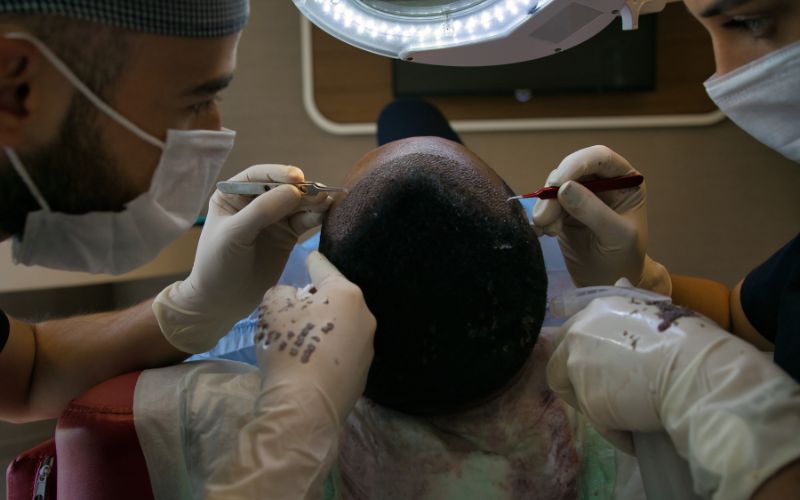Hair Transplants: Journey to Confidence Unveiled

Introduction to Hair Transplants
Hair loss can be a distressing experience for many individuals, impacting self-esteem and confidence. Fortunately, advancements in medical technology have made hair transplants a viable solution for restoring a full head of hair. A hair transplant is a surgical procedure that involves transferring hair follicles from one part of the body, known as the donor site, to the balding or thinning areas, known as the recipient site.
Types of Hair Transplants
There are several techniques used in hair transplantation, each with its own advantages and considerations. Follicular Unit Transplantation (FUT) involves removing a strip of scalp from the donor area and dissecting it into individual follicular units for transplantation. Follicular Unit Extraction (FUE) involves extracting individual follicular units directly from the donor area using a specialized punch tool. Direct Hair Implantation (DHI) is a variation of FUE where the follicles are implanted directly into the recipient site without the need for creating recipient sites beforehand.
Choosing the Right Surgeon
Selecting a qualified and experienced surgeon is crucial for achieving satisfactory results. It’s essential to research the surgeon’s credentials, including their training and certifications. Reading reviews and testimonials from previous patients can provide valuable insights into the surgeon’s skill and patient satisfaction.
Preparation for a Hair Transplant
Before undergoing a hair transplant, patients typically have a consultation with the surgeon to discuss their goals and expectations. During this consultation, the surgeon will evaluate the patient’s hair loss pattern and donor hair availability to determine the most suitable approach. Patients should also educate themselves about the procedure and what to expect during and after the surgery.
The Hair Transplant Procedure
On the day of the procedure, the patient is administered local anesthesia to numb the scalp, ensuring a comfortable experience. The surgeon then harvests hair follicles from the donor area using either FUT or FUE technique. The harvested follicles are meticulously implanted into the recipient site, following the natural hair growth pattern for a seamless and natural-looking result.
Recovery and Aftercare
Following the surgery, patients may experience some discomfort and swelling, which can be managed with prescribed medication. It’s essential to follow the post-operative instructions provided by the surgeon carefully. Patients are advised to avoid strenuous activities and protect the transplanted area from direct sunlight and trauma during the initial healing phase.
Results and Expectations
While the transplanted hair may shed within the first few weeks after the procedure, new hair growth typically begins within a few months. It may take up to a year to see full results as the transplanted hair gradually thickens and matures. With proper care and maintenance, the results of a hair transplant can be long-lasting, providing a permanent solution to hair loss.
Cost and Affordability
The cost of a hair transplant varies depending on various factors, including the extent of hair loss, the technique used, and the geographic location of the clinic. While the upfront cost may seem significant, it’s essential to consider the long-term benefits and increased confidence that a hair transplant can provide. Many clinics offer financing options to make the procedure more accessible to patients.
Benefits of Hair Transplants
Beyond the physical restoration of hair, hair transplants can have a profound impact on an individual’s self-esteem and quality of life. Restoring a full head of hair can boost confidence and improve social interactions, leading to a more fulfilling personal and professional life. The natural-looking results of modern hair transplant techniques ensure that no one will suspect that a hair transplant has been performed.
Risks and Complications
Like any surgical procedure, hair transplants carry some risks, including infection, bleeding, and scarring. It’s essential for patients to understand these risks and discuss them with their surgeon before proceeding with the surgery. Unrealistic expectations can also lead to disappointment, highlighting the importance of having open and honest communication with the surgeon about the anticipated results.
Alternative Treatments
While hair transplants are an effective and permanent solution for hair loss, there are alternative treatments available for those who may not be suitable candidates for surgery or prefer non-invasive options. Medications such as minoxidil and finasteride can help slow down hair loss and stimulate hair growth. Non-surgical procedures like platelet-rich plasma (PRP) therapy and low-level laser therapy (LLLT) can also promote hair regrowth.
Success Stories
Countless individuals have undergone hair transplants and experienced life-changing results. From regaining their confidence to advancing their careers, the impact of a successful hair transplant extends far beyond aesthetics. Real-life testimonials from satisfied patients serve as inspiration for those considering a hair transplant, showcasing the transformative power of modern hair restoration techniques.
Myths and Misconceptions
Despite the widespread acceptance of hair transplants as a legitimate treatment for hair loss, there are still myths and misconceptions surrounding the procedure. Some believe that hair transplants look unnatural or that they’re only suitable for men. In reality, advancements in technology and techniques have made hair transplants virtually undetectable, and they’re equally effective for both men and women.
Consultation and Next Steps
If you’re considering a hair transplant to restore your hair and confidence, the first step is to schedule a consultation with a qualified hair transplant surgeon. During the consultation, you can discuss your concerns and goals, and the surgeon can assess your candidacy for the procedure. From there, you can make an informed decision about moving forward with the treatment.
Conclusion
Hair transplants offer a permanent solution to hair loss, restoring not only your hair but also your confidence and self-esteem. With advancements in technology and techniques, modern hair transplants deliver natural-looking results that can truly transform your appearance and your life. If you’re tired of hiding your hair loss and longing for a full head of hair, a hair transplant may be the solution you’ve been searching for.

